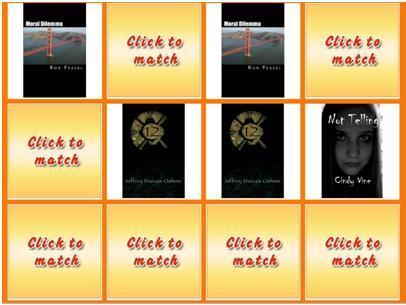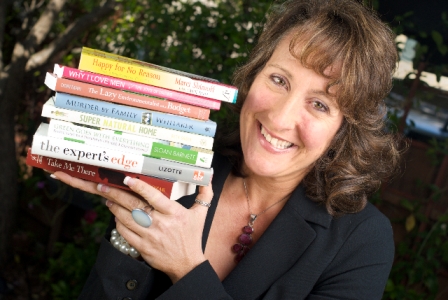In 2006, George Wright budgeted $50 to create and upload 5 online videos featuring his company’s founder Tom Dickson. The format was simple, goofy and offbeat. Tom put various household articles into a blender to test whether the articles would blend. And the online video went on air with the tagline “Will it blend?” The rest, as they say is history. The company – Blendtec, and it’s founder became Internet superstars. Millions of people clicked onto YouTube and Revver to see the oddly disconcerting videos of destruction. And online sales of their high-end blenders increased by a factor of five.
Many authors, on the other hand, view book marketing and promotion as a serious activity and “work”. This translates into their book marketing campaigns being rather staid and boring. The same people who create marvellous plot lines and page turning thrillers come up with very linear offers and “deals” that make them look like used car sales people. For example, you will find author upon author from genre after genre simply doing a book-giveaway or book-contest. Some of these book-giveaway contests require you to re-tweet a message or write a book review. Others require you to read through the excerpt and answer some questions. Needless to say, these contests have very low participation rates and barely justify the time and money that authors put into them.
If you are a non-fiction author with a rather serious or scholarly book, you may argue that you don’t need to infuse fun into your book marketing efforts. Or perhaps your fiction book deals with a serious topic and may not be amenable to levity. But you need to understand that your primary responsibility is to engage, inform and entertain your audience. And this means that you cannot ignore the angle of fun. The aesthetics and the theme of the fun that you inject into your book marketing can vary based on your topic and audience preferences. But without having fun in your book promotion, you will be missing an entire dimension.
You need to understand that you’re in the entertainment business. Your job is to churn out compelling content … content that captivates your target audience and keeps them enthralled. The medium could be a blog post, a contest, a game, a painting or a book … but the end goal is the same. And so are the operating principles.
There may be other authors who argue that people who read books are not necessarily fun seekers. This is a complete fallacy. To seek fun and playfulness is built into our genes. It’s as natural as breathing. In other words, people who read books are a subset of the people who seek entertainment and fun.
This article seeks to define fun in the context of book marketing. It then describes why fun is important for book marketing and promotion. And finally, it offers examples and ideas to infuse fun elements into your own book marketing efforts.
What is fun?
For the purposes of book marketing:
– Fun is playful
– Fun is pleasurable
– Fun is amusing
– Fun makes time move faster
– Fun brings out your inner child
– Fun is involving and engaging
– Fun can often involve the element of surprise
– Fun can come from a game, a video or a picture
Of course, fun is not easy. It requires imagination, effort and a few failures before you get it right. But the rewards can be well worth it.
Why do you need fun for your book promotion efforts?
If you’ve been exposed to any kind of formal marketing or advertising concepts, you will probably have heard of the acronym A.I.D.A. Expanded, it stands for:
Attention – to make your audience aware of you or your product
Interest – to get your audience to become curious about your product and want to learn more
Desire – to stimulate an intense sense of craving
Action – to get them to act on their desire by offering a reason for immediate action
Now as many of you may already know, it’s incredibly hard to catch the attention of your audience in todays over communicated society. An entrepreneur friend of mine was telling me recently that the average person spends less than 3 seconds on a new website that they visit. So you need to be able to catch their attention in that short span of time.
One solution is to outspend the competition to get the attention of your audience – run Super Bowl ads or plaster the Internet with ads. This is often the strategy that is used by giant corporations with mega marketing budgets.
Another method is to think up creative ways to catch the attention of your audience. And fun can be a potent tool in the repertoire of the resource constrained author. Why is this?
In NLP, you will hear about the concept of “pattern interrupt”. The idea is to surprise your visitor with an unexpected turn or twist. So if your visitor clicks through to your website or blog and she gets exactly the same thing that she gets on other author websites and blogs (book excerpt, signed book giveaway, words of praise from readers etc.), you are unlikely to catch her attention. On the other hand, if you interrupt her pattern and engage her in an unexpected way, you’ve achieved the first step in the AIDA formula – that of grabbing her attention.
Also remember that your book is “long form content” and takes hours to finish. A blog post, a video, a picture or a game on your site take relatively less time to consume for your reader and can act as a sample. If your reader likes your sample, she might just decide to go the whole hog and purchase your book.
Need another reason to use fun for your book promotion? Then consider the idea of the “mere exposure effect.” This is a psychological phenomenon by which people tend to develop a preference for things merely because they are familiar with them. In social psychology, this effect is sometimes called the familiarity principle. In studies of interpersonal attraction, the more often a person is seen by someone, the more pleasing and likeable that person appears to be. Think of the “glow of warmth” you feel when in the presence of something that is familiar.
So when a reader visits your website, blog, Facebook page or other book-marketing artifact, if you can grab her attention and keep her engaged with it for a little while, she begins to become comfortable and familiar with you and your book. And your chances of getting a book sale increase.
This is also the rationale behind the CoverMatcher game on Freado.com. This game is a variation of the commonly played game called “concentration.” The twist is that readers view and memorize book covers instead of generic pictures. When you view a book cover a few times in a new context (such as inside this game), you tend to develop a feeling of familiarity with the book. And are much more likely to recognize the book when you see it in another context such as when buying books on Amazon.
The same rationale holds for the new Hangman games technology that is being offered by BookBuzzr. The idea here is that as the author, you will create a fun word game targeted at your audience. For example, if you have written a romantic novel set in Paris, you can make a hangman game that revolves around famous restaurants in Paris. Or if you’ve written a thriller, you may want to create a hangman game based on a popular book in your genre. Or if you’ve written a book on pirates in the Caribbean, you can create a game that asks your audience to identify some famous Caribbean islands (see sample below.)
Have fun with your book marketing because fun can be profitable!




